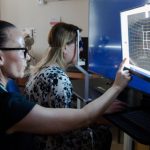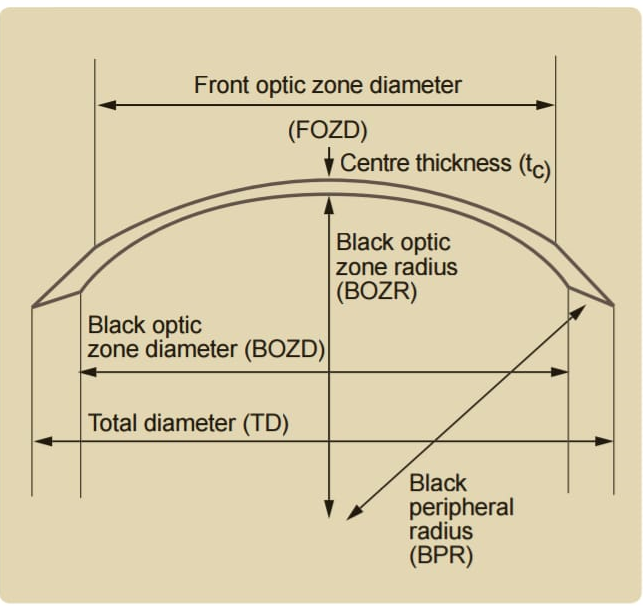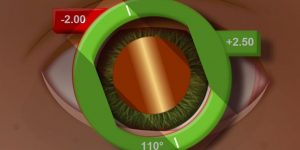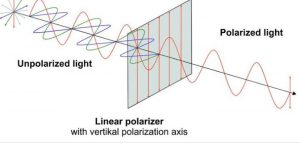The main purpose of the blog is to understand about the optical system of the eye and how light energy of the external environmental or from any kind of the artificial sources interacts with that that optical system of the eye.
So before going to understand the optical system and functions we take a short look on the light energy. So light is a special type of kinetic energy or electromagnetic radiation and it produces the sensation of sight when it interacts with the retina of the living animals. And light energy can also travel in a form of a wave and also matter is not essential for light energy travel. That’s why it can travel in space also where sound energy can’t travel due to the absence of matter. In case of human beings, we only consider the visible range of wavelength of the light energy as visible light which comes from our one and ultimate light source ‘The Sun’. Scientists has estimated that approximately in between 400nm to 700nm wave length of light is only visible to the human eye. Due to this reason, we see the light as white where Violet as the small wavelength is about 397nm and Indigo has a wavelength of about 424nm and for blue 455nm and for green 575nm and for yellow 585nm for orange 647nm and for Red 723nm. When this all color of light mixed up, we see it as white color. If we break this white light with the help of prism or other scientific devices, we can easily observe the light will be separated into these seven colors. This phenomenon also seen in the rainbow where the observer sees a multicolored bow shaped formation in front of eye and this occur due to the presence of excessive water droplets or fog in the air due this the light energy from sun has to be scattered through it and by this way the light energy is separated in different colors according to wavelength.

Now we look into the different optical parts of the human eye and its optical importance.
Cornea- Cornea is the clear and front of the eye. Beside working as a frontal and protective part of the eyeball it consists a refractive power of about (40D-43D). Its work as the main refractive device of the eye ball and light energy which comes from the infinity firstly its refracted through the cornea and goes to the crystalline lens.
Crystalline Lens- As we all know the crystalline lens is a transparent structure which is present behind the iris. The light energy after refracted from the cornea it comes into the crystalline lens and also refracted through it. The crystalline lens consists a refractive error of almost 20D. Beside working as a refractive media the lens and it’s surrounded suspensory ligaments produces a unique mechanism of the eyeball which is known as the accommodation. By this way crystalline lens also function to focus the near objects clearly
Beside the main Refractive media Cornea and the Crystalline Lens, The Aqueous Humor in the Anterior Chamber and the Vitreous gel in the vitreous cavity also contain some amount of refractive power. Approximately, the refractive index of Aqueous Humor and Vitreous Humor is about 1.336.
Retina- Retina is the internal nerve layer of the eye ball which is photo sensitive. When the light energy comes into the retina it transmitted into it and turned into the electrical energy or we can call it electrical impulses with the help of the photo receptors cell the Rods and the Cones.
Mainly retina is consisted of ten layers, and the rod cells containing rhodopsin which is working as the photo receptor molecule for the rod cells. The rod cell is functioning in the dark light and night vision condition. On the other side cone cells are working in the day light and bright light condition photopsins as the photoreceptor’s chemical.
The Visual Pathway:- Visual Pathway is a unique structure which carries the electrical impulses which is formed in the retina with light energy and the visual pathway is mainly divided into five main parts, they are
- Optic Nerve
- Optic Chiasma
- Optic Tract
- Lateral Geniculate body
- Optic Radiations
The electrical impulses travel through the part and reaches to the Visual Cortex where the visual sensation is formed.
Now we are going to look into some abnormalities which is occur due to light energy and the number of the person suffering from this kind of phenomena due to modern life style.
- Effects of Blue light into the eye- In our visible rays of spectrum blue light has a very short weave length which is almost (380nm-500nm) due to this blue has light produces a huge amount of energy. Now days the modern electronic gadgets like mobile phones, Computers, Laptops, Tablets in the modern technological world the
Numbers of the users of these instruments and the time which they spent by using it is gradually increases, the problem is these gadgets ejected a large amount of blue light which directly hits the eyes of the user and develop symptoms primarily like Eyestrain, Headaches, dry eyes excreta but it can lead huge number of refractive changes, Development of Myopia and Macular abnormalities. There are special type of blue filter lenses which is advised by eye care professionals(Optometrist & Ophthalmologist) to the patient suffering from this phenomena there are also special types of visual hygiene procedure available which is also advised for better results.
2.Effects of UV rays into the Eye- UV radiation can occur by sun or some artificial sources if the eyes are exposed to UV rays for long time, then the eyes are at a high risk to develop Pterygium and Cataract and other ocular disease. To avoid these problems the eye care professionals (Optometrists and Ophthalmologists) advised special types of UV protected and Photochromatic lenses or to wear UV protected sunglasses. The purpose of wearing sunglasses is not only for cosmetical benefits it’s also protected our eyes from long term sun light as well as UV rays protections. This how eyes interact with the visible light.









